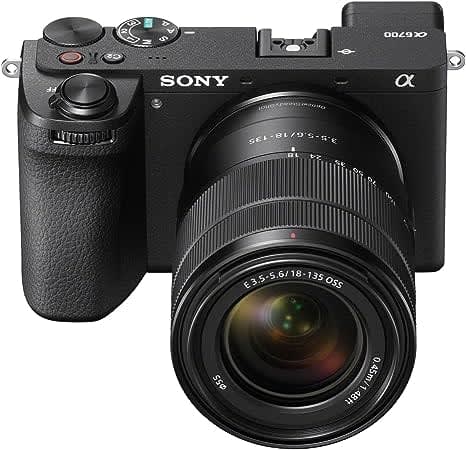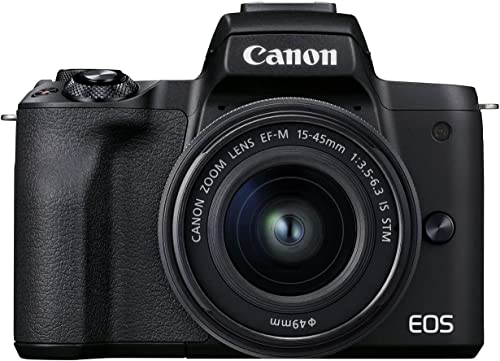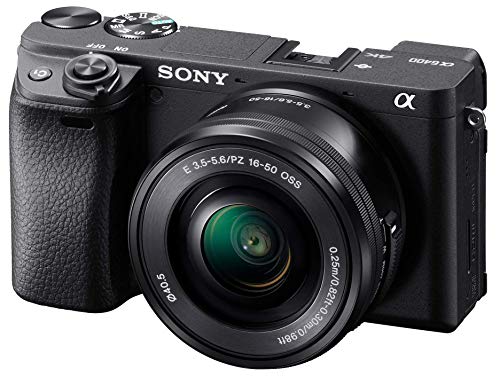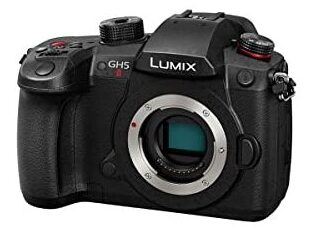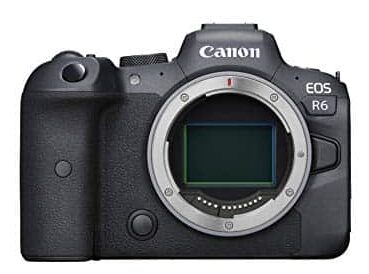[ If you buy gear from one of our links, we may make a commission at no cost to you. Thanks for supporting the blog—we appreciate you! Learn more. ]
Mirrorless Cameras vs. The Rest
What makes mirrorless cameras better than DSRLs or cinema cameras? And, for that matter, ARE they better?
Written by Colette Nichol, Solo Filmmaker and Story Strategist
Estimated reading time: 9 minutes
What Makes Mirrorless Cameras Better than DSRL Cameras?
Mirrorless cameras are better than DSLRs if you’re looking for a lightweight camera with focus peaking, zebras, an electronic viewfinder, and in-body stabilization that actually works. Mirrorless cameras have revolutionized the world of digital photography and videography thanks to the mega tech specs that camera manufacturers can stuff into each camera. So if you need an all-around camera that doesn’t require a lot of extra gear to work, then a mirrorless may be your best choice.
Unlike traditional DSLR cameras that use a mirror mechanism to reflect light into an optical viewfinder, mirrorless cameras eliminate this mirror.
Instead, the light passes directly onto the image sensor, which then displays the image on an electronic viewfinder (EVF) or the camera’s LCD screen. This fundamental change in design brings many advantages.
But, you ask, “What makes these mirrorless cameras better?”
If you want a simple and easy answer, here it is: Mirrorless cameras pack a lot more functionality and quality into a smaller, more compact camera when compared to a DSLR camera. They typically provide better in-body stabilization which allows shooters to do handheld video more easily as well as capture photos in low-light situations. They also typically have better continuous auto-focus than DSLR cameras.
TIME + MONEY = FUNCTIONALITY
Camera manufacturers are putting more development time and money into their mirrorless cameras than DSLR cameras.
Why does this matter?
Well, you tend to get better features for a reasonable price when you buy a mirrorless. Personally, I will always use mirrorless cameras and DSLRs. I love them both and don’t plan on leaving behind my DSLR just because it’s not as trendy.
But for video work, there’s no denying that you get more features and functionality when shooting on a mirrorless.
I can’t see myself using a DSLR for video work any time soon. But for photography, I still enjoy using a DSLR because nothing compares to looking through an optical viewfinder.
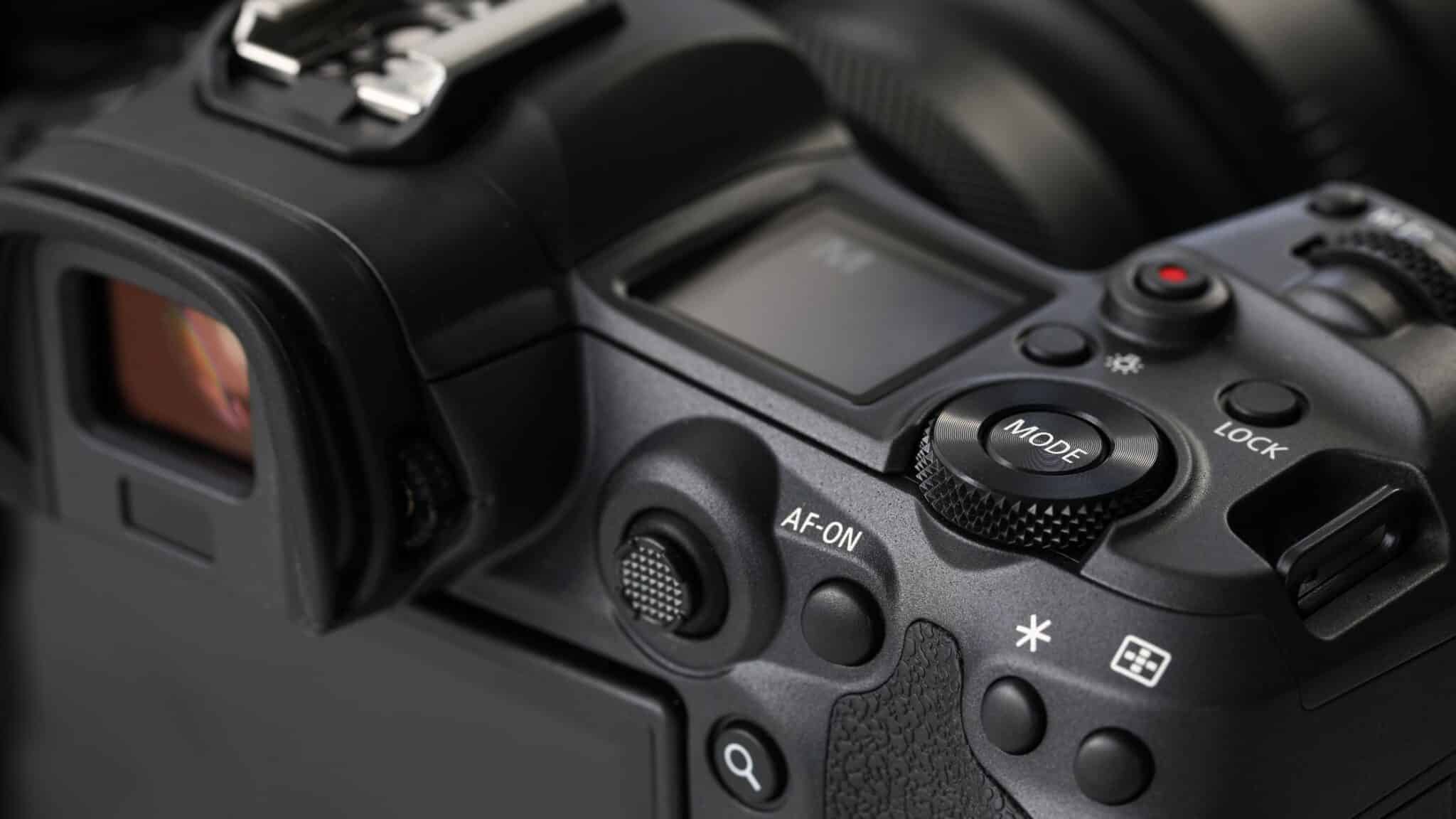
Why Many Videographers Prefer Using a Mirrorless Camera
Compact and Lightweight
The absence of the mirror mechanism makes mirrorless cameras significantly smaller and lighter than DSLRs. This compactness is a huge benefit for videographers who often need to shoot in many locations and conditions. That said, there are heavy mirrorless cameras. And, as soon as you add a big lens to your mirrorless, well, it’s not light anymore! And if you’re using a long lens with high quality glass, it WILL be heavy. So, for walkabout shooting, you’ll want a cheaper and lighter lens.
Advanced Video Features
Mirrorless cameras have been at the forefront of incorporating advanced video features. They typically offer better video quality, including 4K, 6K (and even 8K) recording, superior autofocus in video mode, and features like in-body image stabilization (IBIS), which are helpful for capturing smooth, professional-looking footage. I also love the fact that most mirrorless cameras give you focus peaking and zebras at even the lowest priced camera in the line.
The Blackmagic Pocket Cinema Camera Is a Mirrorless, Micro Four Thirds Cinema Camera
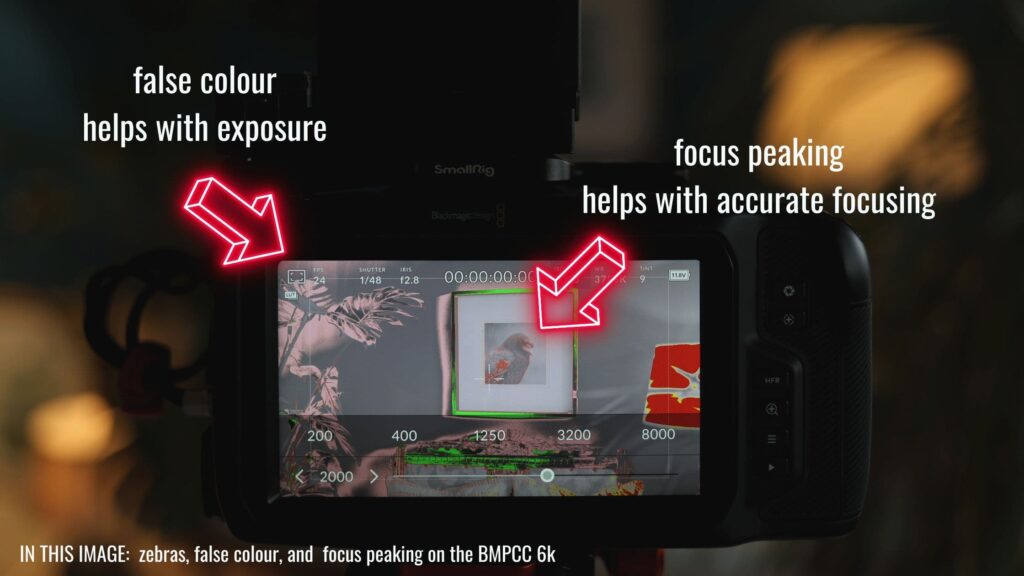
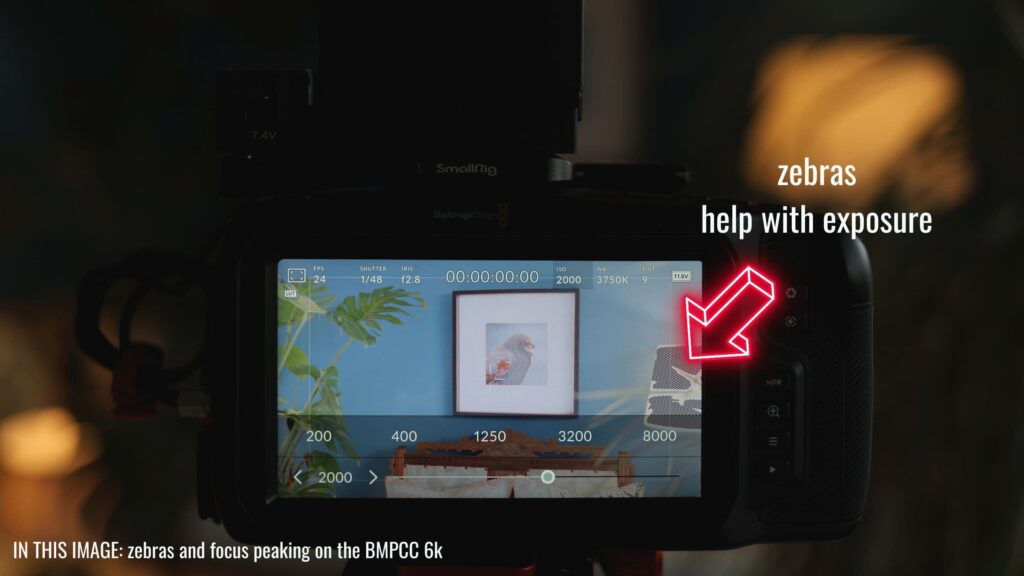
Electronic Viewfinder (EVF) Advantages
The EVF (electronic viewfinder) provides a real-time electronic display of the frame.
This allows videographers and photographers to see exactly what the sensor captures when looking through the viewfinder of the mirrorless camera. This feature is incredibly useful for assessing exposure, focus, and composition when looking through an electronic viewfinder.
Sometimes if the light is really bright it can be hard to see your frame when looking at LCD. Having an electronic viewfinder takes that problem away. You can look through the viewfinder without dealing with glare issues.
If you’re new to cameras, a viewfinder is the hole at the top of the camera that you look through to either see the real life frame or the electronic rendering of the frame you’re about to capture.
Faster Autofocus and Continuous Shooting
Mirrorless cameras often have faster autofocus systems due to the direct measurement of the image sensor.
This is particularly useful in dynamic shooting scenarios common in video production. They also appear to have better continuous autofocus and eye tracking right now. If you compare specs between a DSLR and mirrorless that cost the same, you often get better autofocus (and other) functionality for the same price.
Silent Shooting
The lack of a mirror mechanism allows for quieter operation. For photographers, if you’re shooting wildlife or easily distracted subjects or quiet events than having silent shooting is important.
Recommended Mirrorless Cameras
- Entry-Level: Canon EOS M50 Mark II – An excellent mirrorless camera choice for beginners, offering great video quality and user-friendly features at an affordable price.
- Mid-Range: Sony α6700 – An ideal mirrorless camera for intermediate users, this mirrorless camera balances performance and price, offering advanced autofocus capabilities and 4K video recording.
- High-End: Panasonic Lumix GH5 – A top-tier mirrorless camera for serious videographers, known for its exceptional video quality, robust build, and professional-grade features.
- High-End: Canon R6 – This is the mirrorless camera that I own, and I absolutely love it. The colour science is top notch and so is the in-camera stabilization and autofocus. Highly recommend.
Top Pick: Sony a6700 Mirrorless Camera | |
Best for Content Creators that Do Photography and Video | |
Sensor: 27 MP, APS-C | Mount: E | Sensor-Shift, 5-Axis Stabilization | |
What We Love: ✓ You'll get ALL the specs you need to continue growing your skills and portfolio as a video creator and photographer ✓ Price to value ratio is very high: it's affordable for what you're getting ✓ 11 shots per second means still photographers can capture action moments easily ✓ 5-Axis stabilization in photo and video mode means your stills will be sharper and your video less wobbly even when doing tripod-free shooting ✓ 4:2:2 10-Bit video means beautiful colours and detailed imagery ✓ Articulating touchscreen helps you easily set up shots even if you're low to the ground or bird's eye view ✓ 4k video at up to 120 fps means you can capture ultra buttery slow motion without a care in the world ✓ 240 fps in 1080p means you can slow down a shot by 1000% and still have smooth motion ✓ Ai recognition technology has improved the autofocus tracking ✓ Comes in at under $1500 with the kit lens ✓ You get 14-stops dynamic range in S-Log3 and S-Gamut3.Cine for filmic footage with tons of detail - important for aspiring cinematographers | Downsides: ✘ Like the Canon R8 some users have complained of overheating which causes the camera to turn off. It only appears to be an issue for users who are shooting continuous video footage for more than 30 minutes at a time with HDMI. This isn't something that would worry me because it's not relevant to cinematography or photography. If you're doing old-school videography and shooting locked off continuously for hours at a time, this won't be the camera for you. But photographers and cinematic shooters won't have a problem. ✘ Sony cameras are often less intuitive to use than Canon cameras, so you'll need to dedicate a few weeks to getting good at using your camera and understanding all the features. ✘ Accessing all the manual exposure controls on the camera requires changing your hand position, which can be inconvenient for some shooters. ✘ The electronic viewfinder isn't premium quality so image previews through your EVF don't allow you to see if you nailed the shot or not. ✘ Some users find the menu system confusing. |
Top Pick: Canon EOS R8 Mirrorless Camera | |
Best for Cinematic Video Shooters and Creative Photographers | |
Sensor Size: 24.2MP, Full Frame | Mount: RF | 5-Axis IBIS for Video | |
What We Love: ✓ All the specs you need to get started with ambitious photography or video ✓ Full-frame allows for easier shallow depth of field (blurry backgrounds) ✓ 11.5 stops dynamic range at ISO 100 makes it easier to shoot in bright sunlight without losing detail in the sky ✓ 10-bit video and 14-bit photos give beautiful colour indoors and outdoors ✓ Up to 120 minutes of continuous shooting time ✓ Shoot in 4k at up to 59.94 fps for solid slow motion shots ✓ Shoot extreme slow motion at 1080p with 180 fps ✓ Up to 40 continuous photos i.e. advanced burst shooting for wildlife and sports ✓ Dual Pixel CMOS AF II system recognizes people, animals and cars for autofocus tracking ✓ Mini-HDMI port in case you want to add an external monitor ✓ 3.5mm microphone input and 3.5mm headphone output ✓ Eye detection autofocus for capturing moving subjects - stills and videos ✓ Pro quality for under $1300 body only and under $1600 with the kit lens | Downsides: ✘ If we want to be picky, we could say that 120 fps at 4k would have been nice. ✘ One downside is that the kit lens isn't the greatest quality. But that's normal for a kit lens across all brands. You'll upgrade when you're ready. ✘ You can't record internally to your SD card and externally via HDMI at the same time. ✘ There are some complaints online about the camera turning off because of overheating when using it on HOT days for a few hours at a time without shutting it off and in live view mode. Or when shooting in 4k at 60 fps continuously i.e. for 10 to 30 minutes at a time or more. --> What to do: set the camera sleep mode as short as you can so it goes to sleep after just a few seconds of inactivity. Then overheating shouldn't be an issue for photographers. Also, don't keep it in direct sunlight for long periods of time. And finally, there's typically no good reason to be shooting video for more than 60 seconds at a time at high frame rates like 60 fps. For long continuous video recording just shoot at 24 fps, which is more than sufficient. |
DSLR vs Mirrorless Common Questions
Why are mirrorless cameras usually smaller and lighter?
They are smaller and lighter because they lack the bulky mirror and optical pentaprism or pentamirror found in DSLRs.
The absence of these components allows mirrorless cameras to have a more compact and streamlined design, making them more portable and convenient for users who prioritize mobility.
What are the benefits of an electronic viewfinder on mirrorless cameras?
Electronic viewfinders (EVFs) on mirrorless cameras offer several benefits, including:
- Real-time preview: EVFs provide a live view of the scene with exposure and focus adjustments, allowing you to see exactly how the image will turn out before taking the shot.
- Focus aids: EVFs can display focus peaking, zebra patterns, and magnified views to assist with manual focusing.
- Overlay information: EVFs can display essential shooting information, such as histograms, levels, and grid lines, directly in the viewfinder.
- Customization: You can often customize the appearance and information displayed in the EVF to suit your preferences and shooting needs.
How well do mirrorless cameras work in low light?
Mirrorless cameras can work quite well in low light conditions, especially those equipped with larger sensors and fast lenses.
Their ability to use electronic viewfinders or LCD screens for composing shots allows for easier focusing in low light. Some mirrorless models also have advanced noise reduction and image stabilization technologies, making them suitable for low-light photography.
Are mirrorless cameras better for video than DSLRs?
Mirrorless cameras are often preferred for video due to their compact size, silent shooting, and advanced video recording features.
Many mirrorless models offer 4K video recording, focus peaking, and better live view capabilities. However, DSLRs can still capture high-quality video and are used by professionals in videography, so the choice depends on specific needs and preferences.
Can I use different lenses with mirrorless cameras?
Yes, you can often use different lenses with mirrorless cameras.
Many mirrorless systems offer adapters that allow you to use lenses from other manufacturers or DSLR lenses on your mirrorless camera. However, using adapters may affect autofocus performance and functionality, so it’s essential to research compatibility and potential limitations. But most camera brands have a wide range of mirrorless lenses to choose from as well as 3rd party lenses.
Related Post: Best Lens for Video Hands Down!
Does a mirrorless camera cost more than a DSLR?
The cost of mirrorless cameras compared to DSLRs varies depending on the models and brands.
In recent years, the prices of both types of cameras have become more comparable. Entry-level models for both DSLRs and mirrorless cameras are usually affordable, but high-end models can be more expensive, regardless of the camera type.
What new features might future mirrorless cameras have?
The development of mirrorless cameras continues to evolve, and future models may feature:
- Improved image sensors with higher resolution and sensitivity.
- Enhanced autofocus systems with even faster and more accurate tracking.
- Advances in image stabilization technology.
- More compact and efficient designs.
- Enhanced video capabilities, such as higher frame rates and improved codecs.
- Connectivity options and integration with other devices and platforms.
- Continued growth in lens options and accessories for mirrorless systems.
Recommended Mirrorless Cameras
| |||
Entry-Level | Mid-Range | High-End | High-End |
Ideal for newcomers, providing superior video clarity and easy-to-use functionalities at a cost-effective price. | A game-changer for filmmakers. Its cutting-edge features set new standards on our ninja table of top mirrorless cameras. | A game-changer in mirrorless technology, offering unmatched image quality & versatility for photography enthusiasts. | This is the camera that I own, and I absolutely love it. The colour science is top notch and so is the in-camera stabilization and autofocus. Highly recommend. |
Final Thoughts on Mirrorless Cameras
Mirrorless cameras have emerged as a superior choice for many videographers due to their compact size, advanced video capabilities, and versatility.
They cater to a wide spectrum of users, from beginners to professionals, offering tools and features that enhance the filmmaking process.
As technology continues to evolve, the gap between mirrorless and traditional DSLR cameras in terms of video production is expected to widen further, affirming the status of mirrorless cameras as a pivotal tool in the filmmaking and photography industry.
However, DSLR cameras are not going to disappear. For those of us who like the old-school experience of looking through a viewfinder at the “real world,” nothing electric can ever replace the DSRL. I plan on continuing to shoot photos with my DSLR. I won’t be using a DSLR for video any time soon.
But I can’t imagine never using an optical viewfinder again. So for the old-school experience, a DSRL will still remain the best choice.
More Filmmaking Articles
⭐ What Is the Difference Between Mirrored and Mirrorless Cameras?
⭐ What is a Mirrorless Camera?
⭐ Learn How To Use a Filmmaking Camera

About the Author
Hi! I’m Colette Nichol. I’m a solo filmmaker and story strategist based out of rainy Vancouver, Canada. I’ve been making videos and micro films for small businesses and global brands since 2014.
Plus, I LOVE to help aspiring filmmakers pursue their dreams and start making films. This blog is designed to help you gain the knowledge you need to become a filmmaker.
If you want more, get on the waitlist for the Story Envelope Academy Solo Filmmaking Mentorship Program. It opens up one time per year and is the best way to become a filmmaking or video pro fast!
CLICK HERE to get on the solo filmmaking mentorship waitlist.
